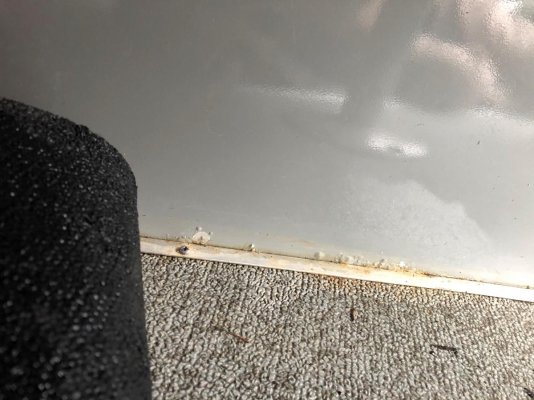Please post info on what you find.
Don't put too much stock in my opinion here - but I wonder if there are several different things going on? The second and third photo seem to indicate poultice corrosion where standing water at the seam gets trapped, is deoxygenated, and leads to corrosion. If that is paint that I'm seeing (I can't really tell), then water leads to corrosion under the paint, this lifts the paint and allows more water in which further corrodes. That sets in a never ending cycle. The answer is to keep the area dry, which may be impossible with that carpeting in place. Absent that, I've also been told a couple gallons of baking soda in warm water sprayed into the area changes the Ph balance and helps stop further corrosion. But I've only heard that from one guy (granted, he knew a lot about aluminum workboats) and have never tried it myself. I kept all interior paint off my aluminum for just that reason.
The corrosion around the screws could be galvanic or poultice, I can't tell. If galvanic, then aluminum anodes would be called for. The easy way to check that is with a silver /silver chloride half cell. I assume your corrosion dude could test that with a clip on anode to see if it works before committing to bolting on anodes. But I've never used one of those clip ons before so I can't give first hand advice on it. Also, if removing the screws to make a repair, I believe best practice would be to reinstall the screws with a coating of Tef Gel.
But on the holes where there is no dissimilar metal or place for water to get trapped (some of the holes on first and fourth pic) would indicate stray current corrosion. I'd want to see what's on the other side of those holes to made a better guess.
Sorry I can't be more help, but I hope the guy you've got coming down is well versed in types of corrosion and gives you a better run down and brings a reference electrode to help test the boat in it's slip.
Please post results if you can. There is more mis-information on aluminum corrosion than there should be...even among experts.




